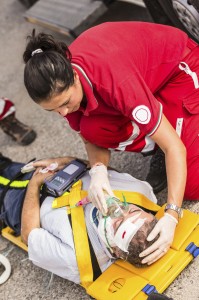 New York City Mayor Bill de Blasio isn’t wasting any time in following through on his traffic safety campaign promises. Recently, he offered details into how he expects to reduce traffic fatalities to nil in the “Vision Zero” plan. But only two days later, he came under fire for breezing through stop signs and speeding about the city in a police-chauffeured SUV.
New York City Mayor Bill de Blasio isn’t wasting any time in following through on his traffic safety campaign promises. Recently, he offered details into how he expects to reduce traffic fatalities to nil in the “Vision Zero” plan. But only two days later, he came under fire for breezing through stop signs and speeding about the city in a police-chauffeured SUV.
Traffic deaths in New York City have fallen over the past decade. In 1990, there were some 701 fatalities on NYC streets. In 2011, the rate was down to 249. Still, there is room for improvement.
The city’s official website declares that the Big Apple has become both nationally and internationally recognized for its safe street designs. De Blasio’s Vision Zero hopes to take this recognition and the safety of New Yorkers even further.
Proposed Vision Zero Changes
Vision Zero—a plan encompassing the goal of reducing traffic fatalities in the city to zero,—has been a goal for Mayor de Blasio since before he entered office.
According to New York Magazine, a recent press conference offered some additional insight into the plan. Not only will Vision Zero involve increasing enforcement at problem intersections and design changes like street-widening or adding turn lanes, but it also will include high-tech solutions as well.
One of the most novel concepts in the Vision Zero plan is that cabs that will alert both passenger and driver when the taxi has exceeded the speed limit. This “pilot technology” will hopefully help keep the city’s most common drivers accountable for their behavior behind the wheel. City-owned vehicles will be equipped with a similar form of technology, designed to record speeding and unsafe driving by city employees.
The NYPD will transition from radar speed detection to something called lidar, which uses infrared light and is said to be more accurate than radar. A crash data management system will also replace the current system and allow for greater information management in regard to accidents.
Traffic cameras will be added at around 20 intersections and lighting will be improved at another 1,000.
Vision Zero Under Criticism
As with all government-launched safety campaigns, there are criticisms about Vision Zero already. One of the biggest is that “increased enforcement”, a term we’ve heard a lot, seems to apply to increased enforcement of jaywalking.
Sure, crossing NYC streets anywhere but the intersection is an invitation for disaster, but jaywalking is far from one of the main causes of accidents. Still, critics say NYPD traffic enforcement officers are increasing enforcement of errant pedestrians when they should be focused on drivers.
Compared with 27 jaywalking tickets doled out from the first of 2013 through Feb. 9 of that year, there were 215 during the same period this year.
The intentions of Vision Zero and the potential of the program to make city streets safer are all positive. Perhaps we’ll reach a day when everyone is held responsible for keeping traffic safety a priority as they move about town.
In the meantime, people harmed in an automobile accident through the carelessness or actions another driver should understand their legal options. You may have a legal right to seek compensation to cover your medical bills and other expenses.
